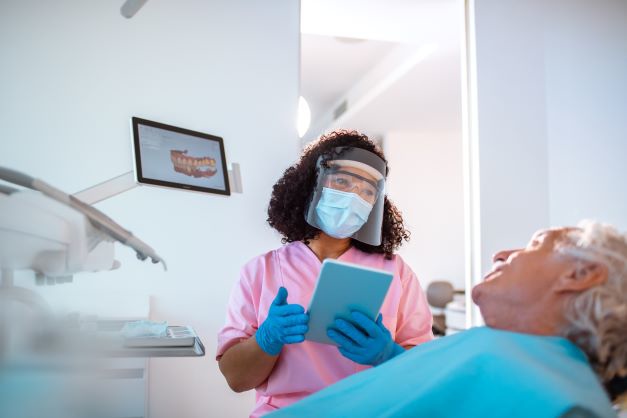Should you be screened for lung cancer?
Oct 20, 2022

November is Lung Cancer Awareness Month, which makes it a good time to talk about yearly screening for lung cancer with your primary care provider.
Lung cancer is the leading cause of cancer death among both men and women. In fact, more people die of lung cancer every year than of colon, breast and prostate cancers combined.
The good news? Now there's a way to screen for it.
Low-dose CT scans have been found to be an effective way to find lung cancer early, at a more treatable stage. People at high risk for lung cancer are eligible for this test.
Who’s at high risk?
You need to meet certain criteria to be considered high risk for lung cancer. Annual screening with a low-dose CT scan is recommended for adults ages 50 to 80 who:
- Have a 20-pack-year* smoking history
- Currently smoke
- Or have quit smoking within the past 15 years
*Pack years are determined by how many cigarettes you smoked annually. You would have a 20-pack-year history if you smoked a pack of cigarettes a day for 20 years. You also would have a 20-pack-year history if you smoked two packs a day for 10 years, or half a pack a day for 40 years.
Other factors that increase your risk
Although smoking is the number one cause of lung cancer, high exposure to the following agents can increase your risk for lung cancer:
- Radon. Radon exposure is the second-leading cause of lung cancer. Radon is an odorless, invisible radioactive gas that resides in soil. It can come up through the soil and enter buildings and homes through small gaps and cracks. You can test your home for radon by purchasing an inexpensive test kit sold at most hardware stores.
- Occupational hazards. These include but are not limited to asbestos, uranium, arsenic, cadmium, chromium, nickel and some petroleum products. If you think you’re exposed to dangerous chemicals at work, talk with your primary care provider about how you can protect yourself.
- Particle pollution. There is evidence that exposure to tiny particles of pollution, including smoke, increases the risk for lung cancer.
- Family history. A family history of lung cancer may also put you at higher risk for getting the disease. If members of your family have had lung cancer, let your primary care provider know.
Benefits and risks of screening
The main benefit of screening for lung cancer is saving lives. Lung cancer screening finds 80 percent of lung cancers at an early stage when they’re more treatable. Without screening, 70 percent of lung cancers are found at a later stage when there is little chance of a cure.
There are some risks with screening. For example, there is a low radiation exposure risk—a little higher than the dose women are exposed to when they get a mammogram.
There’s also the risk of false positives. This occurs when a test shows signs of cancer where actually there is none. This could expose a person to unnecessary follow-up tests, including biopsies.
To determine if you should begin yearly lung cancer screening, talk to your primary care provider. Please take this Lung Cancer Screening Quiz to find out if you’re eligible for testing.


